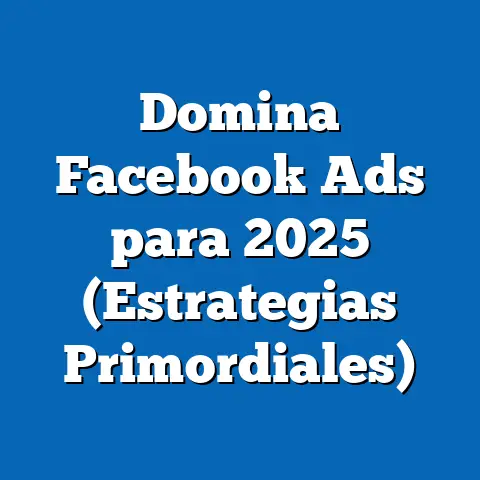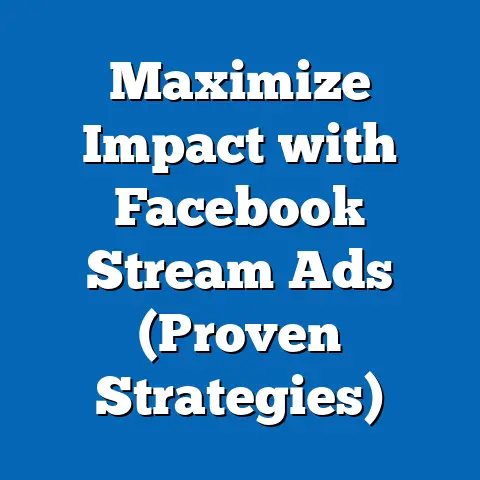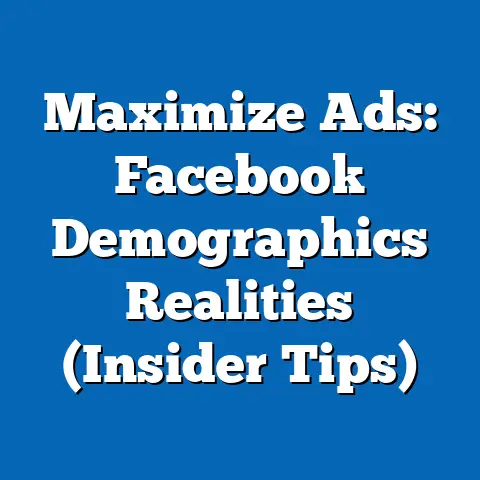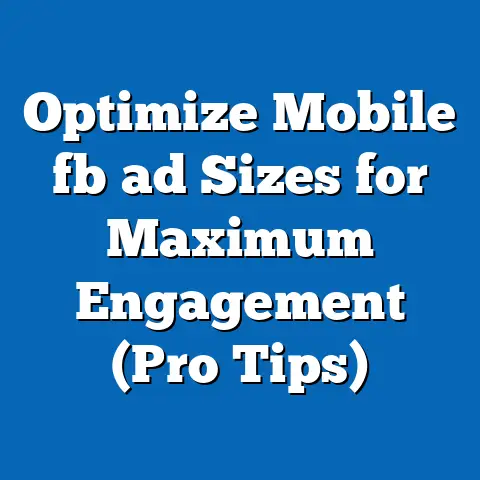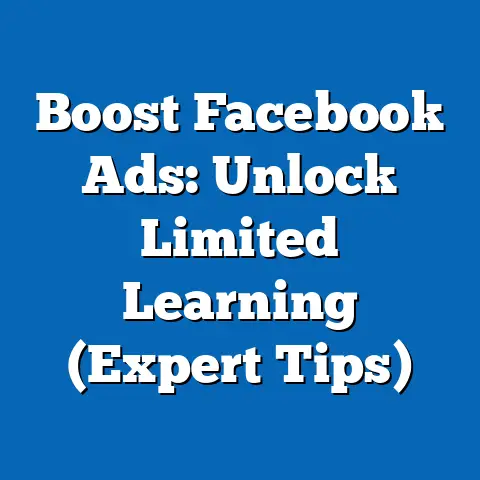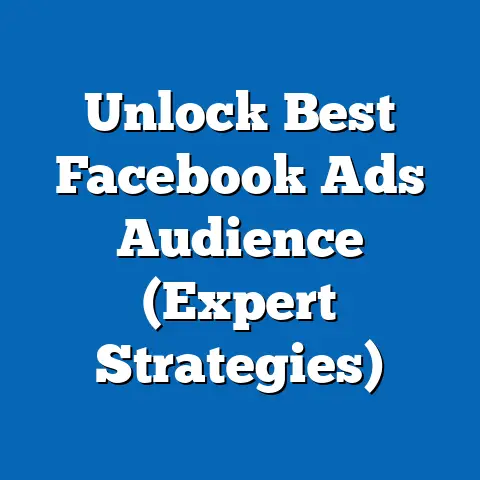Unlock Sales with Facebook Dynamic Ads (Proven Benefits)
The digital advertising landscape is a relentless race. E-commerce is booming, projected to account for over 20% of global retail sales by 2026, and if you’re not leveraging advanced advertising tools, you’re likely leaving money on the table. Your competitors are already using Facebook Dynamic Ads to connect with potential customers, personalize their experiences, and drive sales. The clock is ticking.
That’s where Facebook Dynamic Ads come in. They’re not just another advertising option; they are a powerful, personalized, and automated solution designed to significantly boost your sales outcomes. In this article, I’ll delve into the proven benefits of Facebook Dynamic Ads, showing you how they can transform your advertising strategy and unlock a new level of sales success. We’ll explore what they are, how they work, and most importantly, how you can use them to achieve remarkable results. Let’s dive in!
Understanding Facebook Dynamic Ads
At their core, Facebook Dynamic Ads are a form of personalized advertising that automatically promotes products to people who have expressed interest on your website, in your app, or elsewhere on the internet. Think of it as a smart, automated salesperson who knows exactly what each customer wants and shows it to them at the right time.
The magic behind Dynamic Ads lies in their technical infrastructure. They rely on a few key components:
-
Product Catalog: This is a feed containing information about all the products you want to advertise. It includes details like product name, description, price, availability, and a direct link to the product page.
-
Facebook Pixel: This is a snippet of code you place on your website to track user behavior, such as page views, add-to-carts, and purchases.
-
Audience Targeting: Dynamic Ads leverage Facebook’s powerful targeting capabilities to reach people who have interacted with your products or similar audiences.
-
Automated Ad Creation: Once you set up your product catalog and pixel, Facebook automatically generates ads based on user behavior and the information in your catalog. This means you don’t have to manually create individual ads for each product.
Product Catalog: This is a feed containing information about all the products you want to advertise. It includes details like product name, description, price, availability, and a direct link to the product page.
Facebook Pixel: This is a snippet of code you place on your website to track user behavior, such as page views, add-to-carts, and purchases.
Audience Targeting: Dynamic Ads leverage Facebook’s powerful targeting capabilities to reach people who have interacted with your products or similar audiences.
Automated Ad Creation: Once you set up your product catalog and pixel, Facebook automatically generates ads based on user behavior and the information in your catalog. This means you don’t have to manually create individual ads for each product.
Dynamic Ads vs. Traditional Facebook Ads
Traditional Facebook ads are often static, requiring manual creation and targeting. While they can be effective, they lack the personalization and automation of Dynamic Ads. Here’s a quick comparison:
| Feature | Traditional Facebook Ads | Facebook Dynamic Ads |
|---|---|---|
| Personalization | Limited; relies on broad demographic and interest targeting. | High; personalized based on individual user behavior and product interactions. |
| Automation | Manual ad creation and management. | Automated ad creation and delivery based on product catalog and user actions. |
| Retargeting | Requires manual setup and management of retargeting campaigns. | Streamlined retargeting based on products viewed, added to cart, or purchased. |
| Scalability | Can be time-consuming to scale due to manual processes. | Highly scalable; easily adapts to changing product inventory and audience size. |
| Ad Relevance | Can be less relevant to individual users, leading to lower engagement rates. | Highly relevant due to personalization, resulting in higher click-through rates and conversions. |
| Feature | Traditional Facebook Ads | Facebook Dynamic Ads |
|---|---|---|
| Personalization | Limited; relies on broad demographic and interest targeting. | High; personalized based on individual user behavior and product interactions. |
| Automation | Manual ad creation and management. | Automated ad creation and delivery based on product catalog and user actions. |
| Retargeting | Requires manual setup and management of retargeting campaigns. | Streamlined retargeting based on products viewed, added to cart, or purchased. |
| Scalability | Can be time-consuming to scale due to manual processes. | Highly scalable; easily adapts to changing product inventory and audience size. |
| Ad Relevance | Can be less relevant to individual users, leading to lower engagement rates. | Highly relevant due to personalization, resulting in higher click-through rates and conversions. |
Takeaway: Facebook Dynamic Ads are personalized, automated ads that leverage your product catalog and user behavior to show relevant products to potential customers. They offer significant advantages over traditional ads in terms of personalization, efficiency, and scalability.
Proven Benefits of Facebook Dynamic Ads
Now, let’s delve into the specific benefits that make Facebook Dynamic Ads a game-changer for businesses looking to boost sales.
Benefit 1: Highly Personalized Advertising
In today’s crowded digital landscape, personalization is no longer a luxury; it’s a necessity. Consumers are bombarded with ads every day, and they’re more likely to engage with content that feels relevant and tailored to their needs. Dynamic Ads excel in this area by delivering highly personalized experiences.
Imagine a customer browsing your online store, looking at a specific pair of shoes but not making a purchase. With Dynamic Ads, you can retarget that customer by showing them that exact pair of shoes in their Facebook feed. This level of personalization can significantly increase the likelihood of a purchase.
I remember working with a clothing retailer who was struggling with high cart abandonment rates. By implementing Dynamic Ads and retargeting customers with the items they left in their carts, we saw a 25% reduction in cart abandonment and a significant increase in sales.
Example: A customer visits your website and views a specific laptop model. The next time they log into Facebook, they see an ad featuring that exact laptop, along with a special offer or discount.
Takeaway: Personalization drives engagement and conversions. Dynamic Ads allow you to deliver tailored content that resonates with individual users, increasing the likelihood of a purchase.
Benefit 2: Increased Efficiency and Time Savings
One of the biggest challenges for marketers is time management. Creating and managing individual ads for hundreds or thousands of products can be incredibly time-consuming. Dynamic Ads automate this process, freeing up your time to focus on other important tasks.
By connecting your product catalog to Facebook, you can automatically generate ads for all your products. Facebook then uses its algorithms to show the right products to the right people, without you having to manually create each ad.
According to a study by Facebook, businesses that use Dynamic Ads save an average of 6 hours per week on ad creation and management. That’s a significant amount of time that can be reinvested in other areas of your business.
Example: Instead of manually creating ads for each of your 500 products, you upload your product catalog to Facebook and let Dynamic Ads automatically generate ads based on user behavior.
Takeaway: Automation saves time and resources. Dynamic Ads automate the ad creation and management process, freeing up your time to focus on other important tasks.
Benefit 3: Retargeting Capabilities
Retargeting is a powerful marketing technique that involves showing ads to people who have previously interacted with your brand. It’s a highly effective way to re-engage potential customers and drive conversions.
Dynamic Ads excel in retargeting because they allow you to show users the exact products they have already shown interest in. This level of personalization can significantly increase the likelihood of a purchase.
I’ve seen countless businesses achieve impressive results with retargeting through Dynamic Ads. For example, a furniture store I worked with saw a 40% increase in sales by retargeting customers who had viewed specific furniture items on their website.
Example: A customer adds a product to their cart but doesn’t complete the purchase. With Dynamic Ads, you can retarget that customer by showing them the item they left in their cart, along with a reminder to complete their purchase.
Takeaway: Retargeting is crucial for driving conversions. Dynamic Ads allow you to show users the exact products they have already shown interest in, increasing the likelihood of a purchase.
Benefit 4: Enhanced User Experience
In today’s digital world, user experience is paramount. Consumers expect seamless, personalized experiences, and they’re more likely to engage with brands that deliver on this expectation.
Dynamic Ads contribute to a more seamless shopping experience by showing users products they are genuinely interested in. This reduces the chances of ad fatigue and increases the likelihood of engagement.
By showing relevant products to potential customers, you’re not just selling; you’re providing value. You’re helping them discover products they might not have found otherwise, and you’re making their shopping experience more enjoyable.
Example: A customer who is interested in hiking boots sees ads for hiking boots, rather than irrelevant products that don’t align with their interests.
Takeaway: User experience matters. Dynamic Ads contribute to a more seamless shopping experience by showing users products they are genuinely interested in, increasing engagement and reducing ad fatigue.
Benefit 5: Scalable Advertising Solution
Whether you’re a small startup or a large enterprise, you need an advertising solution that can scale with your business. Dynamic Ads are designed to be scalable, making them an ideal choice for businesses of all sizes.
As your product inventory grows and your audience expands, Dynamic Ads can easily adapt to these changes. You don’t have to manually create new ads or adjust your targeting; Facebook automatically handles these tasks for you.
This scalability allows you to reach wider audiences without sacrificing personalization. You can continue to deliver relevant, tailored experiences to potential customers, even as your business grows.
Example: As you add new products to your inventory, Dynamic Ads automatically generate ads for these products, ensuring that your advertising efforts keep pace with your business growth.
Takeaway: Scalability is essential for long-term success. Dynamic Ads are designed to be scalable, making them an ideal choice for businesses of all sizes.
Success Stories and Case Studies
To further illustrate the power of Facebook Dynamic Ads, let’s take a look at some real-world examples of businesses that have successfully used them to unlock sales.
Case Study 1: Online Fashion Retailer
An online fashion retailer was struggling to drive sales and reduce cart abandonment rates. By implementing Dynamic Ads and retargeting customers with the items they left in their carts, they saw a 25% reduction in cart abandonment and a 30% increase in sales.
The retailer also used Dynamic Ads to show customers similar products to those they had previously viewed, further increasing engagement and driving conversions.
Case Study 2: Travel Agency
A travel agency wanted to promote its vacation packages to potential customers. By using Dynamic Ads to show users personalized vacation packages based on their travel history and interests, they saw a 40% increase in bookings.
The agency also used Dynamic Ads to retarget customers who had previously visited their website, reminding them of the vacation packages they had viewed and offering them special discounts.
Case Study 3: Home Goods Store
A home goods store wanted to increase sales of its furniture items. By implementing Dynamic Ads and retargeting customers who had viewed specific furniture items on their website, they saw a 40% increase in sales.
The store also used Dynamic Ads to show customers complementary products to those they had previously viewed, such as showing them lamps and rugs that matched the style of the furniture they had viewed.
These case studies demonstrate the versatility of Dynamic Ads and their ability to drive sales across a variety of industries. Whether you’re selling fashion, travel, or home goods, Dynamic Ads can help you reach potential customers, personalize their experiences, and boost your bottom line.
Takeaway: Real-world examples demonstrate the power of Dynamic Ads. These case studies showcase how businesses have used Dynamic Ads to drive sales, reduce cart abandonment, and increase engagement.
Conclusion
In today’s competitive digital landscape, you can’t afford to ignore the power of Facebook Dynamic Ads. They offer a personalized, automated, and scalable solution for reaching potential customers, driving conversions, and boosting sales.
By implementing Dynamic Ads, you can deliver tailored experiences that resonate with individual users, save time and resources on ad creation and management, and reach wider audiences without sacrificing personalization.
Don’t wait any longer. Explore Dynamic Ads for your own business and unlock the potential for increased sales and customer engagement. The future of advertising is personalized, and Dynamic Ads are your key to staying ahead of the curve.
Actionable Step: Start by setting up your product catalog and Facebook pixel. Then, create a Dynamic Ad campaign and start retargeting potential customers with the products they have already shown interest in. Track your results and make adjustments as needed to optimize your campaign for maximum performance. The time to act is now!

